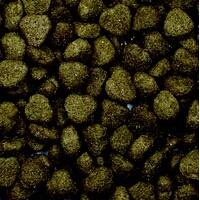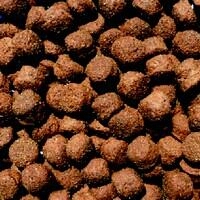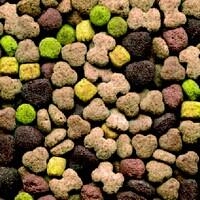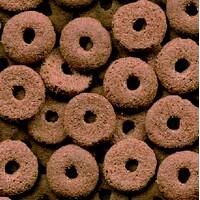- Home
- FAQs
- Customer Video Gallery
- Customer Photo Gallery
- Bird Facts
- Bird Food Blog
- Bird Information
- Feeding Advice
- Small Animal Information
- A to Z of Guinea Pigs
- A to Z of Hamsters
- A to Z of Rabbits
- Basic Care for Guinea Pigs
- Basic Care for Hamsters
- Basic Care for Rabbits
- Basic care for Chinchillas
- Basic care for Ferrets
- Basic care for Gerbils
- Basic care for Mice
- Basic care for Rats
- Buying a Healthy Small Animal
- Does your Reptile need a Licence
- Equipment for Ferrets
- Equipment for Hamsters
- Equipment for Mice
- Equipment for your Chinchilla
- Equipment for your Gerbil
- Equipment for your Guinea Pig
- Equipment for your Rabbit
- Keeping a House Rabbit
- Dog Information
- Cat Information
- Customer Information
- Fat Balls
- Suet Pellets
- Straights
- Seed Mixes
- Suet Treats
- Mealworms
- Bird Feeders
- My Account
Dogs Health Vital Signs
Find out how tuning in to your dog’s attitude, appearance and behaviour can help you nip health problems in the bud.
Many of us believe that a wet nose is the sign of a healthy dog, and while this is partly true it doesn't tell the whole story. For example, a dry-nosed dog may be healthy, while a wet-nosed one may be unwell! As an owner, it is important for you to be able to spot when your dog feels off colour so you can take him to the vet to get the problem checked out.
Clients frequently bring their dogs to see me, saying, ‘I can’t put my finger on it but I know there is something wrong with my dog.’ This is a reasonable, sensible complaint because dog owners usually know their own dog better than anyone else. After all, they live with the animal and are familiar all his usual characteristics and mannerisms.
A dog is a creature of habit who tends to behave consistently in any given circumstance, so any change from his normal behaviour may be the first sign that he is ill. It is important, therefore, for a dog owner to observe her pet carefully when he is in good health and behaving normally, so she can spot any deviation from his usual pattern.
There are some important observations you can make on a day-to-day basis to assess a dog’s well-being. Indicators to note include coat condition, the animal’s attitude in different circumstances, his appetite, thirst, behaviour, activity and overall expression.
Twootz provides a great range of complete dry dog food and puppy food specially formulated to provide all the nutrients necessary to maintain a nutritionally balanced diet that helps promote good health and vitality. Manufactured in the UK from quality ingredients this range has something for every dog.
Coat condition:
Skin:
Ears:
Mouth odour:
Attitude and behaviour
Appetite:
Twootz provides a great range of complete dry dog food and puppy food specially formulated to provide all the nutrients necessary to maintain a nutritionally balanced diet that helps promote good health and vitality. Manufactured in the UK from quality ingredients this range has something for every dog.
Thirst:
Daily water consumption depends on a dog’s size, weather temperature and the type of food he is fed. Any significant change in the usual amount your dog drinks, particularly for more than a day or two, should be investigated by your vet.
Faeces and urine:
Simple clinical observations
Tip: Any variation from your dog’s normal self should be taken seriously, particularly if more than one thing seems to be wrong. If in any doubt consult your vet.
IMPORTANT – PLEASE READ
Although our experts always do their best to help, this service is not intended to be a replacement for a one-to-one consultation with your own vet. If you are worried about any aspect of your animal’s health, well-being or behaviour, always contact your own vet as soon as possible. Neither Wetnose nor its contributors can be held responsible for the consequences of people acting solely on the information given on this website without seeking appropriate professional advice.
Many of us believe that a wet nose is the sign of a healthy dog, and while this is partly true it doesn't tell the whole story. For example, a dry-nosed dog may be healthy, while a wet-nosed one may be unwell! As an owner, it is important for you to be able to spot when your dog feels off colour so you can take him to the vet to get the problem checked out.
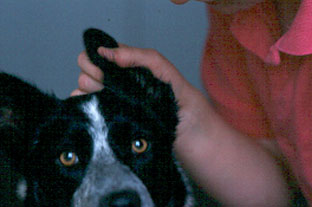
Clients frequently bring their dogs to see me, saying, ‘I can’t put my finger on it but I know there is something wrong with my dog.’ This is a reasonable, sensible complaint because dog owners usually know their own dog better than anyone else. After all, they live with the animal and are familiar all his usual characteristics and mannerisms.
A dog is a creature of habit who tends to behave consistently in any given circumstance, so any change from his normal behaviour may be the first sign that he is ill. It is important, therefore, for a dog owner to observe her pet carefully when he is in good health and behaving normally, so she can spot any deviation from his usual pattern.
There are some important observations you can make on a day-to-day basis to assess a dog’s well-being. Indicators to note include coat condition, the animal’s attitude in different circumstances, his appetite, thirst, behaviour, activity and overall expression.
Twootz provides a great range of complete dry dog food and puppy food specially formulated to provide all the nutrients necessary to maintain a nutritionally balanced diet that helps promote good health and vitality. Manufactured in the UK from quality ingredients this range has something for every dog.
Coat condition:
- Your canine’s coat condition is usually a good indicator of his health status. However, all dogs are different: many have a glossy shine to their coat (e.g. Dobermanns, black Labradors), while others do not (e.g. many terriers and Poodles). Some dogs have soft coats but others are hard and wiry
- A healthy dog will moult (shed hair) at certain times of the year. Some dogs moult more or less permanently (especially since the advent of central heating), while others moult twice a year and some never seem to moult at all. A canine’s coat can look scruffy when shedding hair, but providing he is not going bald it is probably a perfectly normal moult in a healthy dog
- Note the lustre and texture of your dog’s coat in normal conditions, so you’ll have a yardstick to measure possible ill health by
Skin:
- Apart from a change in coat consistency, or a moult, the most common sign of a skin problem is that your dog will start to scratch more than usual
- When scratching becomes excessive it is a strong indication that something is wrong and you need to seek veterinary help
Ears:
- Ear carriage and condition are excellent health indicators. Some canines have pricked ears, e.g. West Highland White Terriers and German Shepherds (Alsatians), while others have floppy ears, e.g. spaniels and hounds. Any ear abnormality should be investigated
- A dog with healthy ears will leave them alone: when a pet scratches his ears excessively it’s a sign that all is not well. The insides of healthy ears tend to be pink and do not smell, so seek veterinary advice if your dog’s ears are red and smelly. In my experience, ear and skin problems often go together
Mouth odour:
- Where breath odour is concerned, it is important to know your dog’s usual smell. Some healthy dogs have naturally bad breath (or so it seems to humans) but if yours suddenly develops halitosis he needs to be seen by a vet
- Bad breath may be a sign that your dog has a problem with his teeth, or has a more serious ailment such as kidney disease
Attitude and behaviour
- Know your dog’s usual attitude, behaviour and demeanour. Many healthy dogs are enthusiastic about everything they do, from greeting you in the morning and on your return from work, to eating their food, drinking their water and, of course, when they are out for their exercise! Other healthy dogs, however, are less enthusiastic as a norm
- It’s essential that you notice how your dog usually reacts or behaves in any given, normal circumstance and to be observant for any change
- The importance of this is illustrated by the number of occasions I’ve seen a client’s dog, made a diagnosis and treated the animal only for the owner to comment, ’He’s better now than he has been for six months – he must have been poorly all this time but we just thought he was getting old!’
Appetite:
Twootz provides a great range of complete dry dog food and puppy food specially formulated to provide all the nutrients necessary to maintain a nutritionally balanced diet that helps promote good health and vitality. Manufactured in the UK from quality ingredients this range has something for every dog.
- Appetite is a good indicator of your dog’s health – providing you know what his normal appetite is. Some healthy dogs eat everything that is put in front of them, while others are fussier.
- When your dog changes his eating habits, take note: an increased appetite can be as much of a sign of ill health as a decrease
Thirst:
Daily water consumption depends on a dog’s size, weather temperature and the type of food he is fed. Any significant change in the usual amount your dog drinks, particularly for more than a day or two, should be investigated by your vet.
Faeces and urine:
- Your dog’s stools (faeces) and pattern of urination are vital indications to his health. A well dog passes firm, well-formed stools two to three times a day, dependent on his food type and quantity, and will pass clear, fresh urine without straining
- Excessively hard or soft stools indicate a digestive problem, while blood in the stools or urine is a sure sign that something is wrong and should be investigated
Simple clinical observations
- A healthy dog will have bright, clear eyes and be keen and alert
- The mucous membranes in the eyes and mouth should be salmon-pink in colour (mouth membranes in some breeds, such as the Chow Chow or Shar Pei are blue-black)
- Dogs drink between a quarter and two litres of water in a day, depending on their size, weather temperature and quantity and type of food eaten
- Constant coughing or sneezing is a cause for concern
- Normal canine body temperature is 100.9°F-101.7°F (38.3°C-38.7°C)
Tip: Any variation from your dog’s normal self should be taken seriously, particularly if more than one thing seems to be wrong. If in any doubt consult your vet.
IMPORTANT – PLEASE READ
Although our experts always do their best to help, this service is not intended to be a replacement for a one-to-one consultation with your own vet. If you are worried about any aspect of your animal’s health, well-being or behaviour, always contact your own vet as soon as possible. Neither Wetnose nor its contributors can be held responsible for the consequences of people acting solely on the information given on this website without seeking appropriate professional advice.




